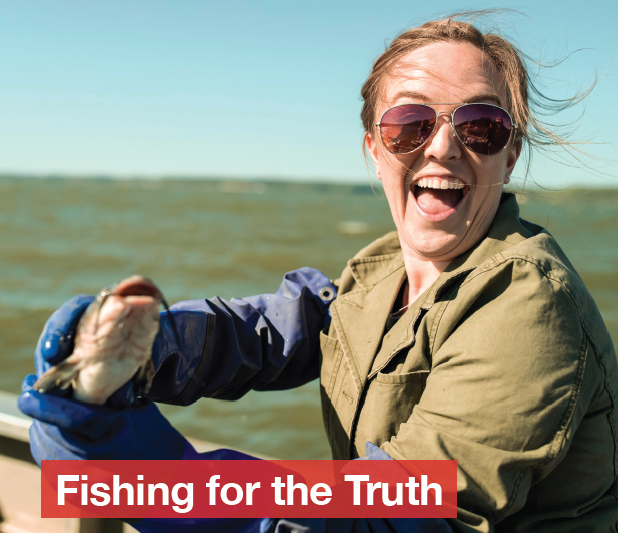
The CEO Guide to Effective Communication
January 30th, 2025 Posted by Emergent Brand Activism, brand advocacy, Earned media, media relations, media strategy, publicity 0 comments on “The CEO Guide to Effective Communication”Encountering the media with intention and strategy…
More than at any other time in the history of modern corporate leadership imperatives, CEOs have moved well beyond their traditional roles in fiscal, operational leadership and legacy focus on rewarding investors. CEOs have transitioned to also being the visionary voice of brand mission, higher purpose, and guidance on societal, political, environmental, diversity and other piping hot and at times polarizing issues.
To be sure it can be uneasy territory, filled with potential potholes and existential challenges. However, times have changed and if you don’t change with them, well, you’re in trouble. Our goal here is to help parse the right path forward, one that leads to successful outcomes when it feels like the critic hounds are already barking at the door.
“It is not the critic who counts. Not the man who points out how the strong man stumbles or where the doer of deeds could have done better. The credit belongs to the man who is actually in the arena, whose face is marred by dust and sweat and blood, who strives valiantly, who errs and comes up short again and again, because there is no effort without error or shortcoming, but who knows the great enthusiasms, the great devotions, who spends himself for a worthy cause; who, at the best, knows, in the end, the triumph of high achievement, and who, at the worst, if he fails, at least he fails while daring greatly, so that his place shall never be with those cold and timid souls who knew neither victory nor defeat.” Teddy Roosevelt.
What’s changed – culture and expectation
Gone are the days when CEOs could stay largely out of range while corporate communication teams handled all the media inquiries and published statements. Leaders are expected to be out in front with a clear point of view about issues that impact their industry, society and even the world at large.
- Here we will provide a framework for how to operate in an uncertain media environment that demands a point of view from leaders not only on business and balance sheet progress, but positions concerning society’s most pressing and complex challenges.
CEOs will rely on communications and corporate affairs teams to help navigate the complexities of modern business society, politics and culture. That said, knowing the rules of the road can help refine decision making and performance in this context.
The new spotlight-intense environment for business leaders
Prior to the ‘glass house’ in which businesses now operate in the digital era, many in the C-suite sought to avoid saying anything in the public domain about a sensitive issue or controversial event. The goal to remain as “Switzerland” as possible – neutral to any provocative issue that leaned into opposing camps and divergent opinions.
Today however, stakeholders expect the CEO to weigh in on challenges from sustainability progress and global warming to the impact of wars and weather anomalies on supply chain disruption, even the advent of new technologies like AI and biotechnology advances that may change the shape of an entire industry.
For their part, consumers demand that businesses bring more than commerce to the marketplace. They expect to see beliefs, values and a useful point of view on challenging conditions such as food insecurity, standards of living and public policy on ESG, DEI initiatives, ageism, LGBTQ+ rights and reforms. Of course, this means accepting that it is no longer possible to please all of the people, all of the time.
A classic example of this new visibility came to light in Chicago during the recent International Manufacturing Technology Show — IMTS 2024 – when the Chicago Tribune published an editorial about a startling statement on America’s workforce made by Apple CEO Tim Cook. Working to correct a popular belief that companies manufacture in China because of low labor costs, Cook declared, “the reason is because of the skill, and the quantity of skill in one location.” He added: “In the U.S., you could have a meeting of tooling engineers, and I’m not sure we could fill the room. In China, you could fill multiple football fields.” Said the Tribune, “Based on the latest numbers, there has never been a time when the need to match job seekers with the nation’s most needed jobs has been as critical.”
A tougher stage: politics
If you are Elon Musk, you might feel compelled to take on highly politicized positions without any concern over how the organizations and businesses you lead will respond to the statements you make. However, for most top executives this paradigm does not exist. That said, there are important reasons to weigh in with perspective on more sensitive issues.
In a recent Fast Company download about this development, Daniella Ballou-Aares, founder and CEO of business membership organization the Leadership Now Project said, “reinforcing the legitimacy of elections rises above partisanship. It’s a commitment to uphold the rule of law, reinforcing trust in American institutions and strengthening the economy.”
What’s in it for business? For one you might agree companies are dependent on an enduring system of laws, even as some may bemoan or seek to circumvent regulations. Government instability can lead to downgrades to the U.S. credit rating and foment market volatility. Meanwhile uncertainty over election outcomes and potential changes in regulations and policy can interfere with a clear path on capital expenditure decisions and long-term planning.
We are all operating now in the midst of deep distrust in institutions including media and government. Knowing this, businesses have an opportunity to support voting and civic engagement in a positive and constructive way. Alan Fleischmann, founder of global CEO advisory firm Laurel Strategies said, “many CEOs I know and work with are encouraging their teams to exercise their right to vote while promoting civility and mutual support.”
Consumers respect honesty
People desperately want businesses to rise above a perceived myopic preoccupation with balance sheet demands to recognize they have a legitimate role on societal challenges such as global warming and the impact of wars on quality of life both here and abroad.
Recent studies reinforce that people truly respect businesses that are open and transparent about the challenges they face in meeting sustainability and emissions goals. This humanizing of the corporate façade is an open invitation to bringing assessment and contributions to the public discourse. What do people seek in this context? Truth and transparency.
Your call to action: courage, honesty, integrity and being on the side of the angels
When we operate from a foundation of empathy and compassion for the welfare of people and the world around us, audiences are drawn to this voice and character of communication. Practically speaking it means dialing down jargon and complex arguments in favor of simple storytelling that respects those receiving the message.
When you are in alignment with your corporate higher purpose and with the publics’ best interests at heart, you are “on the side of the angels.” This positioning can free you to speak with confidence and compassion about what you believe is right.
Process of preparation
In the same way we invest heavily in the work underneath building a new brand narrative, its vital you collaborate with your communications team to do the homework and due diligence around fully understanding the most pressing issues you should be prepared to weigh in on. Stakeholder research can be a significant contributor to decisions in this area.
Some of the narrative will be related directly to the operations and conduct of the business you lead. Other topics will reflect your belief system as a company and what you think is important on issues where your organization has a stake in the outcome – and where the topic is relevant to your new role as a respected voice in society.
These story platforms can be mapped out with key messages and alternative approaches for discussion internally. From our perspective, we stop short of scripting the entire story line because too often it promotes antiseptic memorization that lacks the authentic human voice.
Keys to stronger communication outcomes:
Be real
This may read as an offbeat example, but the Olympics gave us a shining model of authenticity from an unexpected source. Of note, authenticity is vital to how a CEO is perceived in the glare of the media spotlight.
During the Paris games a new sports presenter emerged: Snoop Dog. Note that Snoop didn’t change who he was to fit his commentator role. Instead, he embraced his persona, delivering his perspective with a signature laid-back style and his own observational humor. This authentic delivery fostered a tangible connection with the viewing audience that felt like they were watching a friend, not just another sports analyst.
Too often, we think the media milieu means reliance on scripted, one-size-fits-all language that isn’t designed to truly connect emotionally with the target audience. CEOs need to think about how they relate to core stakeholders, ensuring their voice resonates as genuine, relevant and personal. People gravitate to people they trust, and trust is built on authenticity.
Be human
People prize honesty and truth. They respect confident and open individuals who aren’t afraid to admit mistakes or acknowledge they don’t have all the answers. Here are some of the characteristics you should be reaching for in media settings:
- Show empathy, care and consideration for other people
- Display openness and honesty
- Avoid lecturing or admonishing
Be consistent
Media and stakeholders alike will quickly observe the connection between your statements and the behavior of your business and its policies. Thus, its important the organization operates, makes decisions and takes action in alignment with the beliefs you convey.
You don’t have to know everything
It is the business of media to probe and form questions in the moment. Possible that a query can arise that you don’t have the answer for. That’s fine. Much better to convey you’ll look into a topic and report back later than give a speculative answer that could prove to be inaccurate.
Building a baseline record on issues in relevant, unedited forums
Media unfortunately is mostly a headline and soundbite gambit. Speaking opportunities in the right venues can offer a long-form and unedited forum to take a deep dive of the issues you and your company has a perspective on, thus constructing a public record of your complete positions in the process.
For example, if sustainability is a key issue for your organization, there are a number of conferences focused on these developments where you can explore the details of what you think is important and supply the supporting rationale. You can post recordings of those speeches and discussions at your web site as validation.
There will be some constituents or pundits who disagree. That’s ok, too. You are a subject matter expert now, with a responsibility to convey your organization’s point of view. Welcome to the new world of corporate leaders as advocates.
If this article has you thinking about constructing a comprehensive strategy around communicating positions and views on issues above and beyond your business performance, use the link below to ask questions and start an informative dialogue. We can help you navigate the most pressing and relevant topics to build an effective executive comms plan and message map.
Looking for more food for thought? Subscribe to the Emerging Trends Report.
Bob Wheatley is the CEO of Chicago-based Emergent. Traditional brand marketing often sidesteps more human qualities that can help consumers form an emotional bond. Yet brands yearn for authentic engagement, trust and a lasting relationship with their customers. For more information, contact Bob@Emergent-Comm.com and follow on Twitter @BobWheatley.




